My love story with irises is patient and manifold— a slow burn if you will. I was surrounded by irises last year. One particular part of the garden was even affectionately called “the iris walk.”
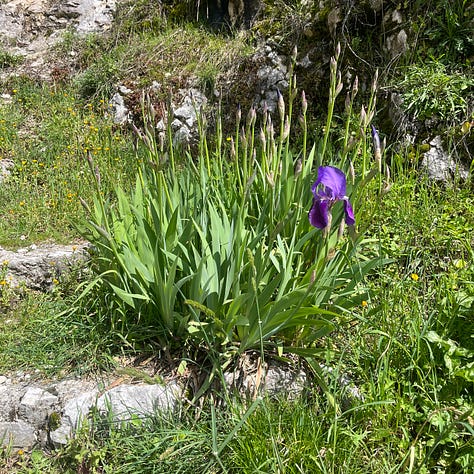
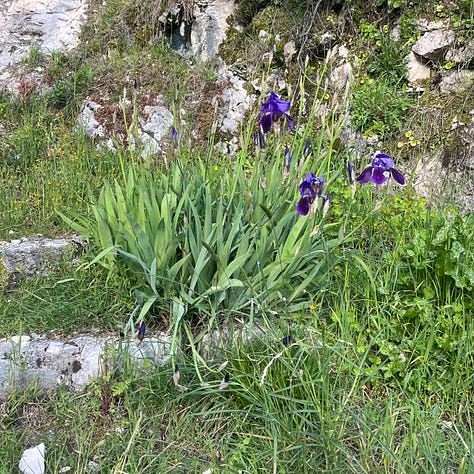
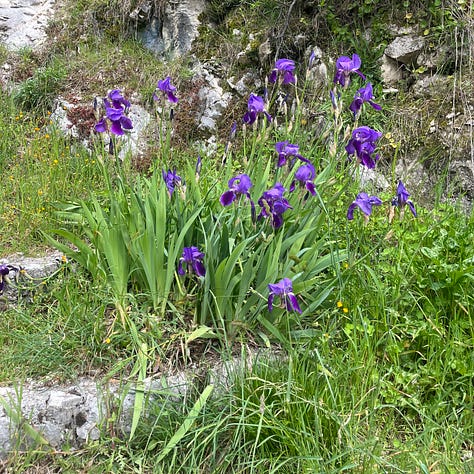
I never really noticed irises before but the more time I spent with the flowers the more I admired their complexity.
At face value, iris morphology is unique. Each flower usually has three falls and three standards that catch your eye no matter where you are standing.
The iris has these lush anthers that look like eyelashes. I feel like I can imagine how pleasurable it is to land on an iris petal and move through this pollen covered anther. It is almost like a soft red carpet inviting a pollinator into a beautiful, perfumed cave.
I dream of a garden full of bearded irises. They are so dramatic. I envy the feminine layering of her petals, it looks like she is dressed in the finest frills made of silk and I want all my outfits to resemble hers.
When you get close her perfume is hypnotic.
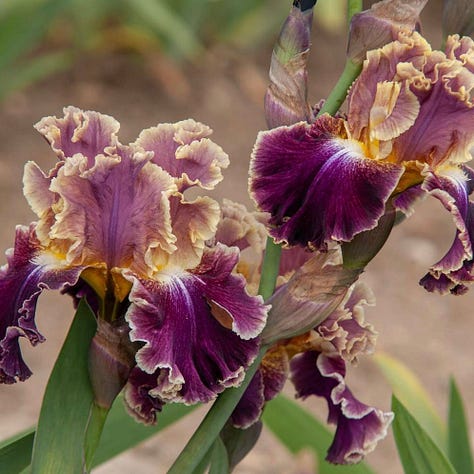
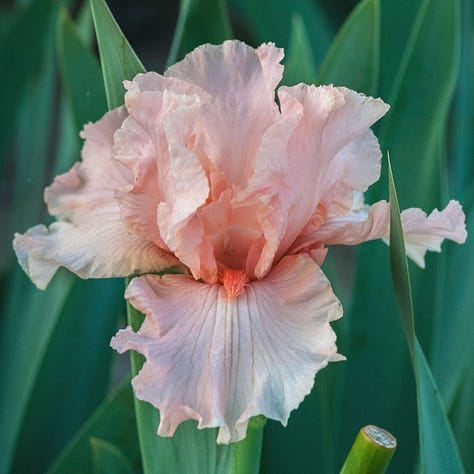
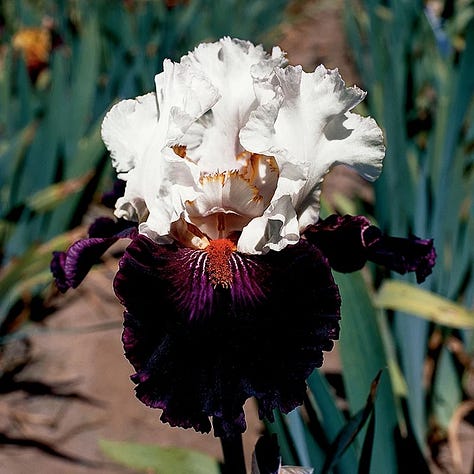
There are many varieties of irises. It is a flower native to the Mediterranean. The two varieties most important in the world of perfumery are Iris germanica and Iris pallida. Surprisingly enough, it is not the petals that lend themselves to perfume. The magic exists underground— in the rhizome.
The dried iris rhizome is known as orris root and it is often one of the most expensive ingredients that perfumers have in their scent organ.
The rhizome must stay in the ground for at least three years before it is harvested. The rhizomes are then dug up in late July, cleaned, peeled and left to dry in the sun. Once dried, the rhizome is then ground up and it undergoes a steam distillation. The result is then referred to as orris butter. Just fifty grams of orris butter retails for €1,000.00.
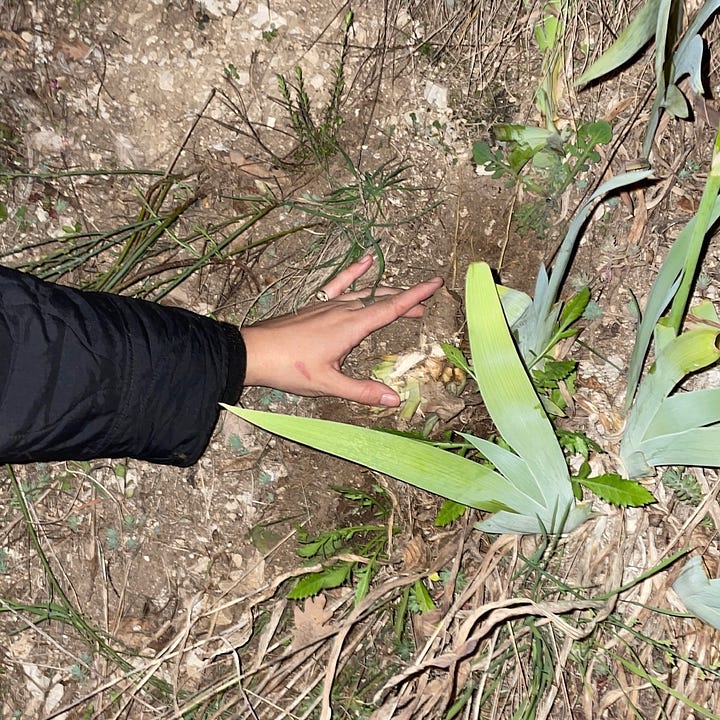
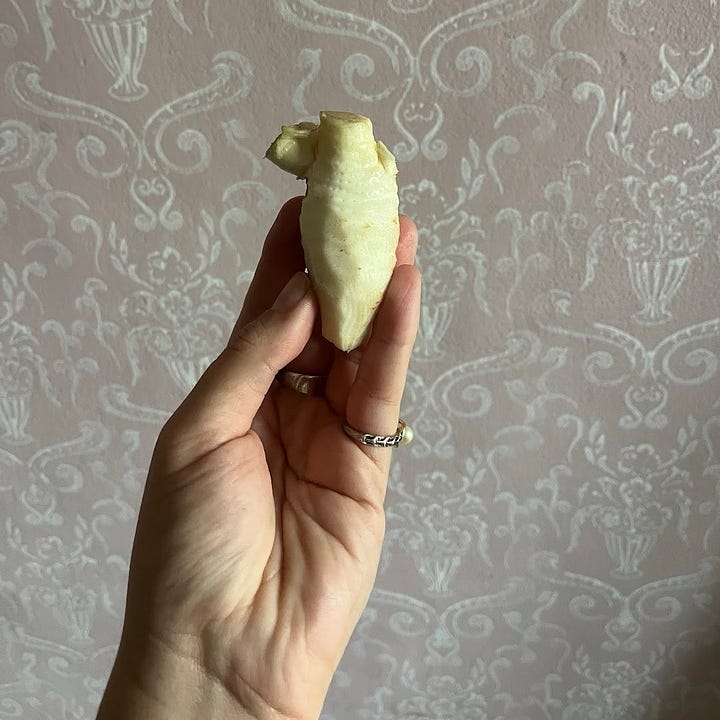
If one was to harvest 1000 kilos of fresh rhizome, you would only make 2 liters of orris butter at the end of the process — hence the high price. This orris butter is then used as a base note and fixative for perfumes.
A small side note for the kitchen — orris root is a component that is found the Moroccan spice blend ras el hanout. You could dig up orris root, dry it and also add this complex flavor to your dishes. One of my favorite cookbooks, The Jewish Cookbook has a recipe for ras el hanout if you are venturing to make it in your kitchen.
I am sure you can already feel it coming but I am going to ask us to mentally transport to Florence once again. We can meet in the apothecary of Santa Maria Novella.
In Italy, il giaggiolo, is the symbol of Florence.
The iris grows so abundantly on the hillsides of Tuscany that the flower became emblematic of the wealth of Florence.
We are just in time to prepare for a visit to the Giardino dell’Iris — this is a garden boasting more than 1000 varieties of iris flowers. The garden will open on April 25th and visitors can cherish the blooms for free until May 20th. Naturally, the dates are subject to the weather and the flowers themselves.
Once the flowers start to wither away, the iris enters another fun phase.
If the iris was pollinated, the ovary will swell into a green seed pod. I think the seed pods are perfect for floral arrangements. Or of course you can harvest the seeds to try your hand at planting them, but most gardeners prefer to split irises and replant them by the rhizomes. The iris can reproduce asexually by creating new growth on the rhizome. This is why you often need to split and divide iris clumps to give them more space.
After the iris uses all of her expansive energy to go to seed, it is time for her to be still. Her leaves will often wilt or start to discolor. On the cusp of fall I learned that I can collect the leaves and lay them to dry them to make cordage.

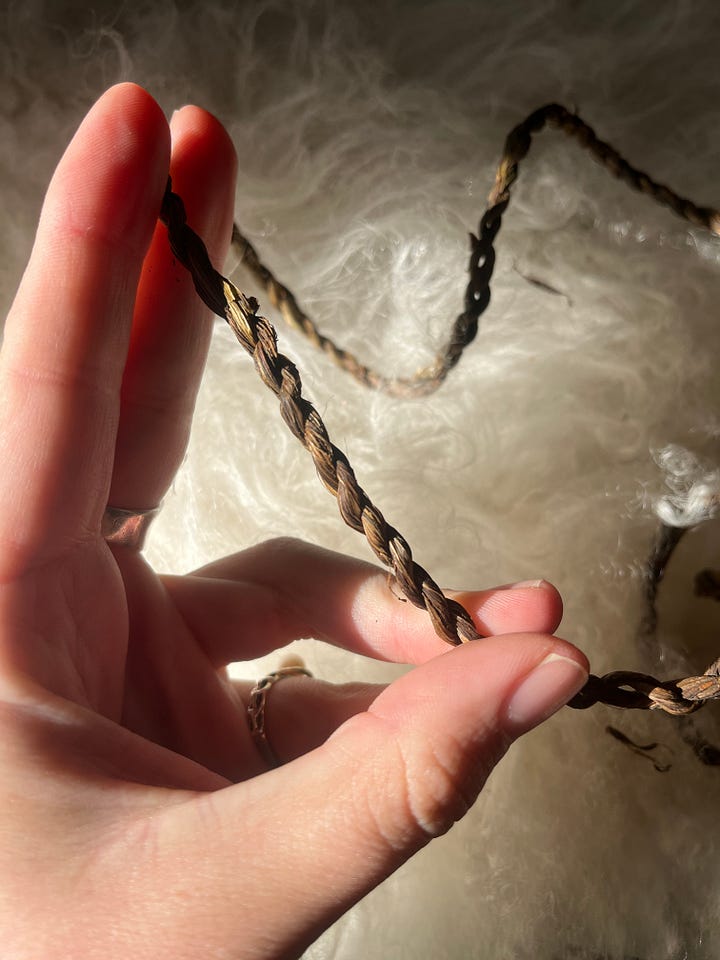
Making cordage is mesmerizing…time dissolves.
The repetitive and rhythmic movement feels like a memory, like I am suddenly using my hands to do what they meant to be doing all along.
The result is a functional piece of rope that I like to use for decoration. Using the cordage leaves me in awe because it makes me remember the delicate spring blooms that caught my attention. The leaves that once went unnoticed as a backdrop for the blooms are suddenly the main attraction. I wrap my cordage thread around gifts to give to friends and I am acutely aware of the orris root I have curing to make more perfume and ras el hanout.
Orris root is a botanical often used in gin.
If you have not picked up on this thread yet either I will spell it out for you— perfume and spirits are one in the same.
A lot of perfume exists thanks to maceration.
A lot of delicious spirits and wines exist thanks to maceration.
My favorite styles of wine are usually red or bianco macerato, “orange wine” for all you English speaking wine freaks. The process of making red wine allows the grape skins to macerate, or sit in, during the fermentation. Orange wine is mimicking the process of making red wine but with white grapes, so here the vintner decides how long the white grape skins will macerate.
Longer maceration usually means more tannins and a darker color.
In the same way that vintners decide how long grapes should macerate, perfumers can decide how long their concretes should macerate in alcohol. These decisions will impart notable differences in the final product. Maceration invites the components to blend and harmonize, resulting in a more refined scent. It can also go very wrong and create something “funky,” but not necessarily in a desirable way.
In both perfume and spirits, the iris plant promises harmony, persistence and longevity. Her presence is deeply feminine. She emanates an outer beauty, possesses a very practical gift stored in her leaves and reserves an alluring magic hidden beneath the soil.
Beyond these notes, the lessons I am currently metabolizing from this plant are mainly related to patience. The depth of the orris butter is something accessed after the rhizome waits in the ground for a long time. The delicate scent is then coaxed out even more after resting in the sun and maturing again for years.
All things worth while take time.

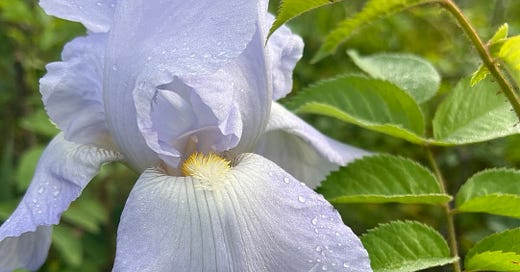



The delicateness of the Iris bloom is mesmerizing, yet the plant is so hardy. One of my favorites! After reading and viewing this bloom, through your eyes, I shall look at my Iris garden in a differant manner. Thank you for sharing.
A lovely piece; reminding me to tend to my irises this evening. Thank you for the encouragement, I am going to add to my current iris garden!